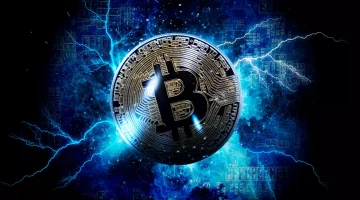
Is Blockchain Technology the Backbone of Digital Currency Networks?
Blockchain is a distributed, digital ledger of all cryptocurrency transactions. It is used to record transactions and manage the issuance of cryptocurrency in a manner that cannot be altered or erased. Blockchain technology is decentralised in that it is not controlled by any single authority, instead it uses the principles of crowd wisdom to override the problem of a single authority holding so much power. Blockchain eliminates the need for a third-party verifier when executing transactions. By doing so, it reduces the bank fees typically associated with transactions.
Blockchain is winning over financial institutions, healthcare firms and nonprofits as a way to make processes more straightforward and transparent.
Transparency
By encoding the data in the blockchain for an app, it means there is a single, immutable record that is beyond the reach of hackers. Every computer on a blockchain network contains their own copy of the ledger, which is updated and verified all at once; there is no single point of failure, and the blockchain is untamperable.
Blockchain also helps make businesses and their dealings more transparent and accountable. More substantively, the technology can prevent fraud and boost security. International trading is especially prone to this type of problem, as any bully who tries to cheat can eventually convince enough people about his trustworthiness.
Data that can be stored on blockchain includes more than just transaction records and ownership records – it extends to IoT sensors and supply chain management applications, to name only a few. Moreover, blockchain is the perfect medium for the creation and sale of non-fungible tokens (NFTs) – which are digital representations of tangible objects – through blockchain-based exchanges.
Security
Pushed by its public nature, and making use of a distributed ledger that records all transactions in the system simultaneously at multiple points, it’s almost impossible to hack or falsify data. Blockchain also makes it impossible to change transactions once they’ve been completed.
For example, each block in the blockchain has the cryptographic hash of the block before it, as well as the data on all the transactions involved and other timestamping information written into its body; without knowing the secret key, it would cost almost as much to try to reverse-engineer a revised record and have the new version approved by the broader bitcoin network than it would simply to do whatever it is you need to do all over again.
Its security is further enhanced by an elegant peer-to-peer, inbuilt, consensus mechanism whereby it is necessary to obtain agreement by at least a majority of blocks that make up the network for any new block to extend the blockchain. All this means that most blockchain networks are inherently decentralised, possessing relatively high levels of resilience against attacks and, crucially, high levels of trust from their users.
Convenience
Blockchain lets two parties do an end-run around an intermediary such as a bank, which saves the parties money and time, and also reduces the chance that Alice will accidentally pay Bob twice or that some entity will forge Bob’s script to pay Alice again (it cuts out the risk of fraud, in other words). Absolute immutability makes it harder to modify or erase information on the blockchain – saving even more time and effort!
Not only can blockchains hold monetary transactions, they can also log other information. As a consequence, companies can track the provenance of a product – for example, where it came from – which means that any outbreak of unsafe food can be made known quickly to consumers. Such transparency is vital any time foodborne outbreaks occur.
There’s no denying that blockchain can be very helpful, in multiple different ways, but people need to understand how it all works. If you have a blockchain network, it’s a chronology of recorded transactions on a blockchain that is integrated through cryptography and consensus algorithms; a blockchain system is a network of information that has been cryptographically put together. A classic one is what we call a proof-of-work blockchain, like Bitcoin or Ethereum. That kind of blockchain, for the cryptographic security of the network, involves lots of computations, which is why it uses a lot of carbon and a lot of electricity, so it’s not very green.
Scalability
Now blockchain is a core feature of many cryptocurrency and decentralised exchange (DEX) networks, with its use exploding in recent years. However, its scalability also remains an issue and experts are still trying to find ways to make it faster and more efficient.
These blockchains are made up of blocks of data, each connected by a ‘chaining’ mechanism to ensure an irreversible retrospective audit trail. Their information is decoded only with cryptographic keys, and added to the blockchain through consensus mechanisms that must be agreed on by at least 50 per cent of all the network participants.
The other approach involves moving some operations away from the main blockchain network itself. ‘Off-chain’ scalability solutions – such as sidechains and improved methods of inter-blockchain communication – would transfer some transactions to other networks, keeping the total numbers down while still speeding up processing speed.





